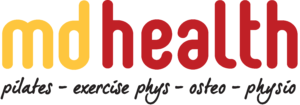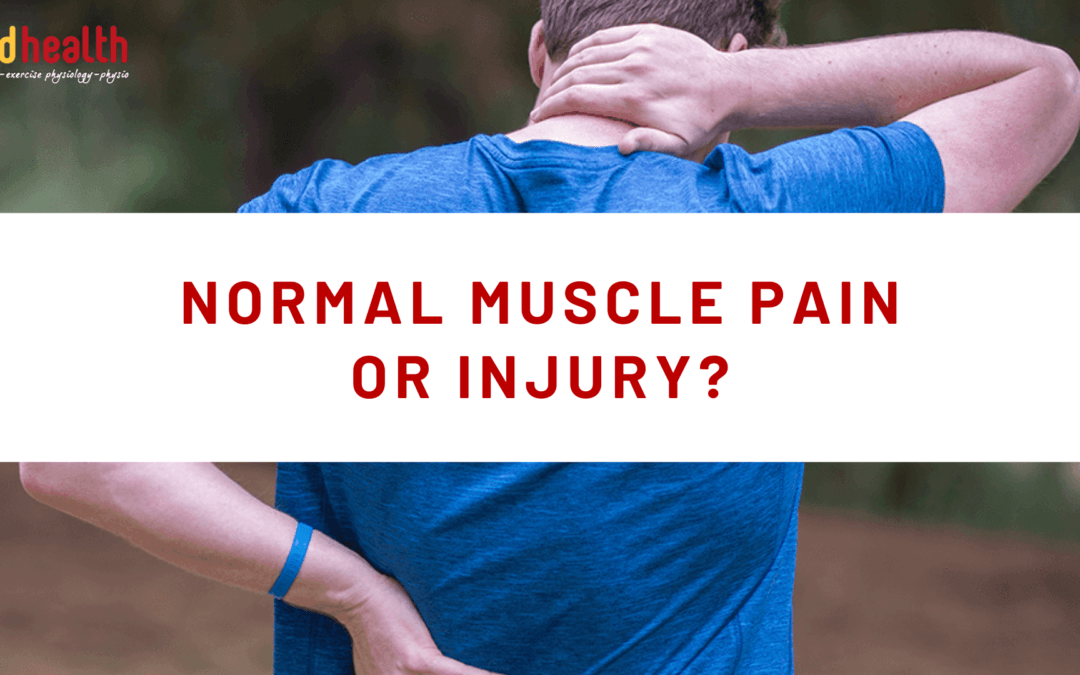After a challenging work or commencing any new training regime out it can be normal to experience some soreness in your muscles, but how can you tell if what you’re feeling is normal muscle pain or injury?
What is the normal muscle reaction expected after Pilates?
Our clinical exercise program is a strengthening-based program. Our aim is to work your muscles in ways they are not used to and address your major needs and goals. From a biological perspective, this means that muscles are worked a little bit more than they are used to coping with so there is small degree of disruption to the join (z-line) between each small unit (sarcomere) that make up the muscle. This causes a release of inflammatory chemicals in the muscle which begin the process of muscle growth. This reaction can cause “soreness” and a heaviness feeling in the muscles from 24 to 72 hours after exercise and is known as DOMS (Delayed Onset of Muscle Soreness). This reaction is normal and is the first step in your body’s process of building muscle. Your body will then repair and build muscle to a larger degree than the amount of disruption caused by the DOMS.
How do I know it is DOMS (Delayed Onset of Muscle Soreness)?
DOMS is felt in the muscle itself, usually begins at its attachment and extends to the muscle belly, e.g. in the quadriceps, you will feel a soreness from the top of the thigh, through the front of the thigh up to just above the knee. It usually starts the next day or 2 days after your exercise session and should feel like a “soreness” or a heaviness sensation. The muscles will feel a bit weaker for a couple of days and you may find it difficult to perform lowering type activities, such as walking down stairs, but this sensation will resolve over the next 2-3 days.
How do I know if it’s NOT normal and should it be addressed?
What you shouldn’t feel is a “pain” sensation, such as a “sharp, stabbing or hurting” sensation. Pain should also NOT be felt on the joint line or areas other than the muscle itself, e.g. at the front of the knee cap or along the back of the knee joint. If this has occurred, it can mean the lining of the joint has been irritated and we need to assess the area again or adjust your program so that it better meets your needs.
What do I do if I have DOMS or I think I have an injury?
If you have DOMS, the best thing to do is to come in for your regular exercise session. Counter-intuitively, exercise will help bring blood to the area, help flush out the inflammatory chemicals and make the muscles feel better again.
If you think you have an injury that describes differently from above, please DO NOT CANCEL YOUR SESSION. It is important that we at MD Health assess the area again and adjust your plan if needed. It is also a very important time to help you manage the potential issue so that the problem is resolved as fast as possible. Also, if you are in a small group class (ie. groups of two or three), please address your concern right at the commencement of your appointment to your health practitioner. This enables us enough time to assess and treat the area to the best of our ability. If you are hesitant to address the issue within your group class, it is best to call in and change your appointment to a one-on-one session.
Want to know more?
If you want more information on muscle pain or would like to book for a FREE full body assessment with one of our Physiotherapists or Exercise Physiologists, call us on 9857 0644 or email us at admin@mdhealth.com.au



